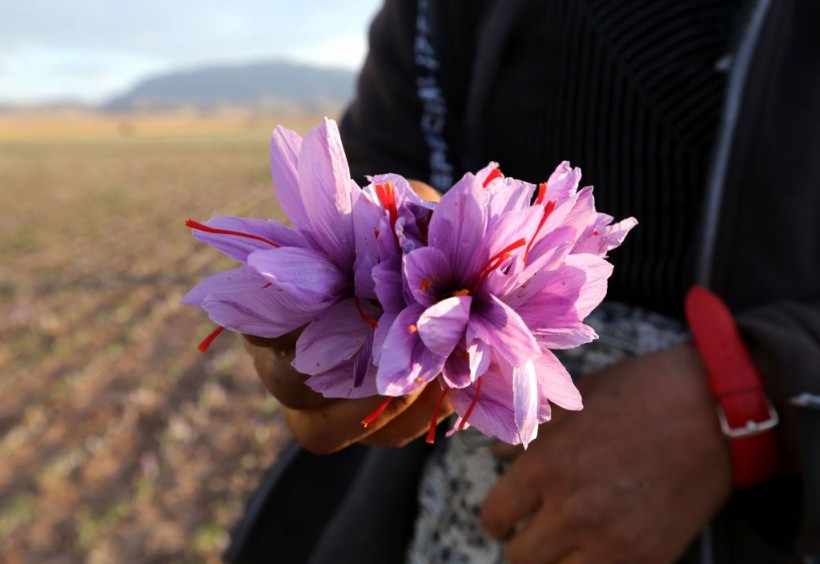The cotton bollworm (Helicoverpa armigera) is a moth that causes enormous damage to crops worldwide, costing about USD$3 billion in economic losses every year.
This insect has a remarkable ability to adapt to different host plants and pesticides, making it a formidable foe for farmers and scientists alike.
One of the factors that contributes to the cotton bollworm's success is its dietary flexibility.
The moth has two distinct life stages: a larva that feeds on plant tissues, and an adult that feeds on nectar.
The larva and the adult have different preferences and sensitivities to sugars, which are the main source of energy for both stages.
But how do these preferences change as the moth matures, and what are the molecular mechanisms behind them?
A new study reveals the sugar-sensing systems of the cotton bollworm
 (Photo : ATTA KENARE/AFP via Getty Images)
(Photo : ATTA KENARE/AFP via Getty Images)

A team of researchers from China and Australia has recently published a study in eLife that sheds light on the sugar-sensing systems of the cotton bollworm.
The study is described as important by the editors, who said it offers convincing evidence that two different gustatory receptors (GRs) for sugar sensing underlie the change in diet preference between the larval and adult cotton bollworm.
The researchers first compared the electrophysiological and behavioral responses of cotton bollworm larvae and adults to seven sugars found in plants, including sucrose, fructose and glucose.
They confirmed that both larvae and adults have sugar-detecting gustatory sensory neurons (GSNs), which are specialized nerve cells that transmit taste signals to the brain.
However, they found that the response profile, intensity and sensitivity of the GSNs differed markedly between the two stages.
The sugar GSNs in larvae responded strongly to sucrose with high sensitivity, which may help them locate sucrose in the sugar-sparse tissues of plants.
Meanwhile, the sugar GSNs in adults responded to sucrose, fucose and fructose with lower intensity and sensitivity, which may reflect their adaptation to the sugar-rich nectar of plants.
The researchers then analyzed the expression and function of nine candidate sugar GR genes in larval and adult taste organs.
They found that two of them, Gr4 and Gr12, were expressed in the sugar GSNs of both stages, but with different patterns. Gr4 was expressed in all sugar GSNs of larvae, but only in a subset of sugar GSNs of adults. Gr12 was expressed in a subset of sugar GSNs of larvae, but in all sugar GSNs of adults.
To test the role of these GRs in sugar sensing, the researchers used a technique called RNA interference (RNAi) to knock down their expression in the cotton bollworm.
They found that knocking down Gr4 reduced the response of larval sugar GSNs to sucrose, but had no effect on adult sugar GSNs.
Knocking down Gr12 reduced the response of adult sugar GSNs to sucrose, fucose and fructose, but had no effect on larval sugar GSNs.
These results suggested that Gr4 and Gr12 are the main GRs responsible for sugar sensing in the cotton bollworm, and that they switch their roles as the moth matures.
Gr4 is the dominant GR for sucrose sensing in larvae, while Gr12 is the dominant GR for sucrose, fucose and fructose sensing in adults.
Also Read: Atlas Moth: World's Largest Moth Species Could Spread in the United States
Implications for pest control and crop protection
The study by Zhang and colleagues provides new insights into the molecular basis of the dietary shift that occurs in the cotton bollworm as it grows from a larva to an adult.
The study also has implications for pest control and crop protection, as the authors explain in their paper
The authors stated that their findings reveal that the cotton bollworm has evolved different sugar-sensing systems to cope with the different sugar environments in its larval and adult stages.
They also suggested that this may contribute to its remarkable host range and adaptability to diverse habitats.
They proposed that understanding the molecular mechanisms of sugar sensing in this pest may help to develop new strategies for its management, such as manipulating its feeding behavior or disrupting its reproduction by interfering with its sugar GRs.
The study also opens up new avenues for further research, such as exploring the evolutionary origin and diversity of sugar GRs in other insects, and investigating the neural and hormonal regulation of sugar sensing and feeding behavior in the cotton bollworm.
Related article: Atlas Moth Disguise: An Insect That 'Transforms' Into a Cobra to Scare Off Predators
© 2024 NatureWorldNews.com All rights reserved. Do not reproduce without permission.




![Roundworms with Short Memories 'Stop Forgetting' When Frozen or Given Lithium [Study]](https://1471793142.rsc.cdn77.org/data/thumbs/full/70295/280/157/50/40/roundworms-with-short-memories-stop-forgetting-when-frozen-or-given-lithium-study.jpg)
